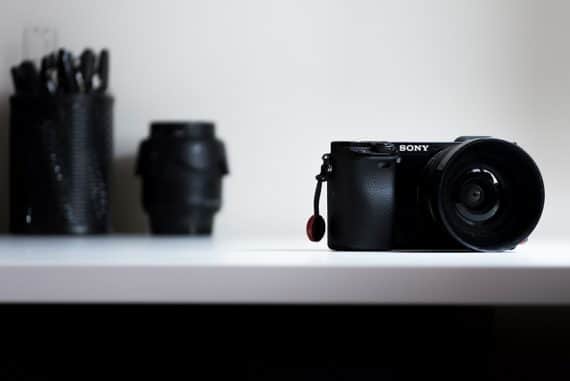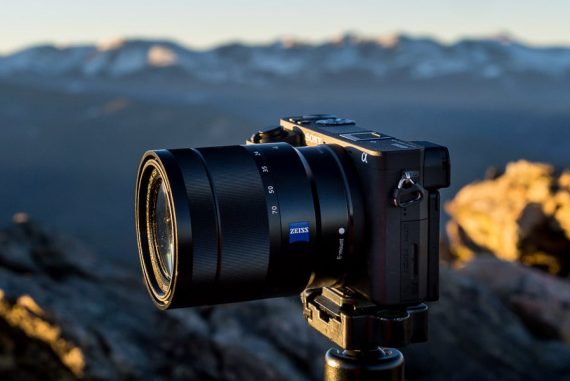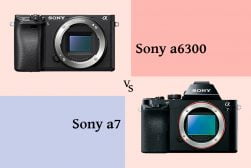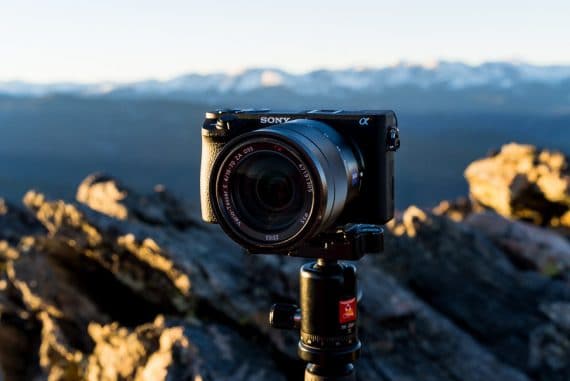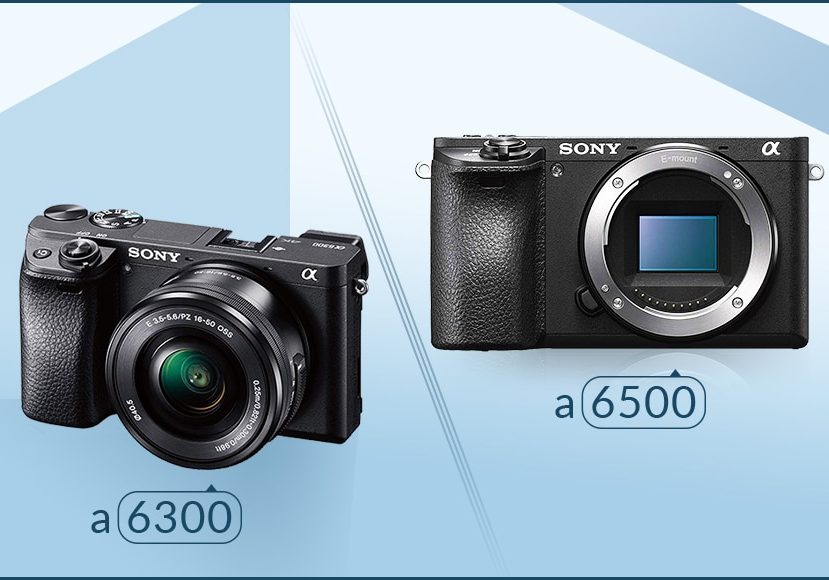
Compare Differences: Sony a6300 vs 6500
If you're struggling to decide between two of the hottest Sony APS-C cameras, this Sony a6300 vs a6500 guide should help you make the right decision.
If you’re struggling to decide between two of the hottest Sony APS-C cameras of 2023, this Sony a6300 vs a6500 guide should help you make the right decision.
These two camera models might be remarkably similar, but they do have their quirky performance differences too.
Sony has been leading the mirrorless camera race for several years now, offering numerous popular models to all genres of photographers.
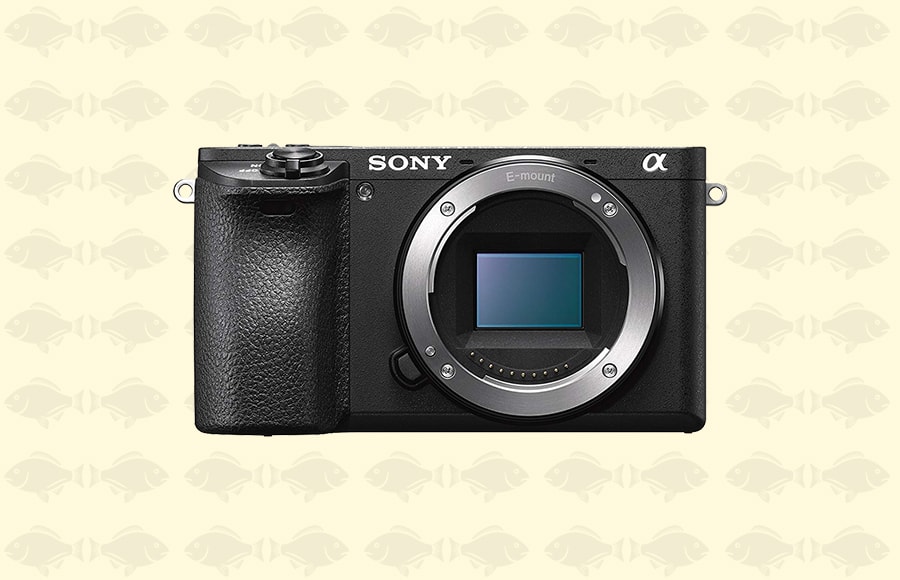
The a6500 nudges ahead of the a6300 thanks to its improved performance and features.
Despite not being the latest models here in 2023, the Alpha a6300 and a6500 are still two top-rated compact cameras, with a wide range of excellent e-mount lenses to boot.
So, if you’ve got around $1,000 to spend on a great camera and e-mount lens, this is the guide for you. Which camera is best – the Sony a6300 or the Sony a6500?
[Related: Sony a6400 vs a5600]
Table of Contents
Difference Between Sony a6300 vs 6500
1. Size, Build & Weight
Looking at the Sony a6300 and its somewhat newer Sony a6500 cousin, you’d almost think they were the exact same camera.
Looking more closely, however, there are indeed distinctions between the Sony A6300 and Sony a6500 despite an interval of only six months between their release dates. A couple of these distinctions are in fact, significant and do create a difference in relative performance.
For starters, while both cameras have the same essential body and same weather-proofed construction (a useful feature that Sony’s original Alpha a6000 model lacks) the a6500 Sony model is ever so slightly thicker due to a more prominent handgrip for easier handling. It also weighs just a little bit more by about 50 grams due to some of the internals that we’ll get to shortly.
The weight difference is small enough to barely be noticeable in the field though: One weighs 454 grams (1 lb), and the other weighs 404 grams (0.88 lbs).
If you take a close look at their external controls, you’ll notice that the Sony a6300 and Sony a6500 are also very slightly different in these two. The newer model (the Sony a6500) comes with a slightly larger shutter release button and a very slightly different power switch. Below this combo, there’s also an extra C2 button.
Finally, the exposure dial on the Sony a6500 has a somewhat different grip texture and the button that works for deleting photos looks different, though it’s in the same place as in the Sony a6300 (review).
In terms of external physical build, the above is just about it for differences between the two digital mirrorless cameras. We should also note that both have the same E mount lens mount specs.

Sony a6500 | © Marc Bergreen
When we take a look at what our Sony a6300 vs Sony a6500 comparison means for each camera’s internals, we see a couple of additional differences in build. The first and most important of these by far is the Sony a6500 camera comes with 5-axis in-body image stabilization technology. The Alpha a6300 doesn’t offer this (in a Sony a6000 vs a6300 comparison both would be the same on this spec).
Thus, with the Sony a6500 (review) what you definitely get is superior image sharpness under tougher shooting conditions. This applies especially for low light shooting in which slight tremors to e-mount lens and sensor stability can spoil light absorption as the shutter opens for a larger fraction of a second. In this one major spec, the Sony a6500 offers a clear advantage over the a6300 model.
The little build extras we describe above combine together to give the Sony a6500 that tiny fraction of extra weight that it has over the Sony a6300. Taken all together, they don’t amount to any truly enormous differences in handling, but they might be important if you have some very specific needs.
2. Continuous Shooting and Autofocus
When it comes to continuous shooting and autofocus, the Sony a6300 and Sony a6500 seem to be perfectly identical performers if you just look at their basic specs, but in fact, they’re different on a couple of possibly crucial things.
The first and more basic of these, which we’ll cover in a bit more detail further down is the simple fact that the Sony a6500 comes with Touch Focus technology in its tilting 3-inch LCD display. This lets you manually adjust the autofocus with your fingers on a composition you’re balancing in the electronic viewfinder.
As someone who has been frustrated here and thereby my own a6000 and a6300 Sony camera’s sometimes screwy automated guesstimation of what I’m really trying to get it to focus on, having this little detail available is great. The Sony a6500 also offers its touch autofocus feature to video recording in 4K or lower resolutions, which is an especially useful bonus to getting your documentary or home movie shots just right on the fly.
Now, let’s move onto an even more crucial but slightly less obvious difference in AF and continuous shooting between the Sony a6300 and Sony a6500: Specifically, while both models offer the same 11fps continuous shooting rate, the newer camera manages to deliver way better buffering performance and handling during buffer.

Sony a6500 | © Marc Bergreen
In other words, while the Sony a6300 is limited to just 44 JPEG and 21 RAW images of continuous shooting with full AF and full autoexposure activated, the a6500 can kick its predecessor’s ass with a solid 300 JPEG and 107 RAW images under the same AF and exposure settings. That’s an awesome advantage in the newer model.
To make the above even better, the Sony a6500 has the cool power of letting you playback and magnify images while it’s saving them to the card at its buffer limit. This means much better usability in the field and on the fly. The A6300 freezes up briefly during saving.
More similarly, both cameras offer the same number of AF points across almost 99% of their sensor size. This amounts to 425 phase-detection points and 169 contrast-detection points with a hybrid Autofocus system. The maximum shutter speed of 1/4000 and a minimum of 30 seconds is the same too in both the Sony a6300 and Sony a6500.
3. Image Quality and Performance
When it comes to a comparison of photographic quality between the a6300 and the a6500, things get a bit tricky. In general terms the two cameras basically produce identical image quality, the same battery life, and why wouldn’t they?
Though the battery life is similar on both models, the a6500 is marginally more power0-hungry than the a6300, due in part to the 5-axis image stabilization which constantly makes micro-adjustments to the sensor and phase detection af point array. Sony e mount APS-C cameras don’t typically have great battery life, but they’re often better than comparable Fujifilm X and other brand APS-C cameras.
Both models enjoy the exact same CMOS 24MP APS-C sensor type and size, and the same Bionz X video processing engine. They’re also identical enough in their ISO range, 14-bit RAW processing (compressed) and virtually all other key photo and video rendering specs that everything delivers equal results for photos taken under the same conditions.
24 MP from the CMOS sensor offers plenty of room for cropping in post, or blowing up images from the cameras for your wall. Both cameras feature decent dynamic range, squeezing the most out of the CMOS sensor, with adequate color depth to delve into the shadows and highlights with minimal noise.
Both models start from ISO 100, with high ISO performance on par – ISO 100 – 25600, although on the a6300, it can be expanded to 51,200. Although the a6300 has better high ISO on paper, we wouldn’t advise using 51,200 on an APS-C sensor camera. Neither camera has a built in flash, but the a6300 Sony has an external flash shoe.
The same applies to color profiles (Creative Styles) in both cameras; they’re identical and so is their final color rendering. In situations where photos are taken under identical settings and conditions with both the a6300 and the A6500, the only single notable picture quality diffeThe single biggest reason for this is the latter camera’s 5-axis sensor-shift image stabilization.

Sony a6300 | © Usnea Lebendig
It works at what it’s designed to fix and even with both cameras having the same ISO, the same low-light noise levels and the same color rendering, the sensor shift stabilizing factor in the a6500 makes it easier to capture better, sharper photos under difficult shooting conditions. This applies, especially in low lighting.rence we can see is that the newer edition’s JPEG and RAW color photos seem to have a very slightly warmer tone. This is really minor though.
For video recording, the same thing is the case. Both cameras include 4K video and have identical specs for all resolutions, frame rate and bitrate. The outputted video from either camera also looks essentially identical if all settings and lighting conditions are kept the same.
Both cameras offer full HD up to 100fps/120fps, which means you can get great slow-motion footage (by slowing down the frame rate in post-production, the playback becomes ‘slow-motion’).
The tricky part occurs when you move beyond output photo or video quality and focus on each camera’s performance at creating its photos and videos in different conditions. This is where the a6500 in particular stands out a bit.
In other words, if you’re shooting action or dim scenes quickly and possibly while also moving around, the newer of the two cameras will give you a notable sharpness assist despite movement and shake.
Finally, because Sony gave the ASP-C alpha 6500 camera a front-end LSI (Large Scale Integration) chip for faster image processing to a memory card, the larger buffer depth we already mentioned earlier means a longer, smoother continuous shooting time. This improves things enormously even though the a6500 has the same 11fps continuous shooting rate as the a6300.
It doesn’t improve photo quality but it makes shooting performance smoother for taking a longer sequence of images without interruption.
Both can shoot up to 1/4000s, and have a first electronic curtain option and electronic shutter.
4. Rear LCD & EVF
The Sony a6500 and a6300 offer essentially the same exact electronic viewfinder with all the same specs. It looks very slightly different cosmetically in the a6500 but that’s pretty much it. Internally, the EVF in both models comes with the same 2,359k dots of resolution, 100% field of view and the same 23mm (0.9 inch) size. Both EVFs also come with the same 0.70X magnification and 120fps live view.
It’s on their LCD displays that the a6300 and a6500 differ slightly. Both LCD monitors offer the same tilt flexibility and size, and they both come with the same 921K dots of resolution, but the LCD of the newer alpha is a touch screen. This means functionality for adjusting autofocus on the fly with your finger during both photo and video shooting.
This little Touch Focus feature is a small addition in the a6500 but we think you’ll find it to be really useful. It works especially well for when you want to change focus point while you’ve got your eye plastered to the EVF and don’t want to look away. It can even be set to work on only a quarter of the LCD touch screen so that you don’t accidentally shift AF with part of your nose, chin or face while composing a shot.
5. Video Recording Specs
Sony’s a6300 and a6500 record video identically, with the same options for resolutions, frame rates, bitrates and with the same resulting picture quality. In concrete terms, this means that both cameras can output video footage in the XAVC S format with capacity for shooting 4K at 100mbps as many as 30fps, Full HD 1080p at 50mbps up to 120fps.
The one major difference that makes the a6500 outperform the a6300 by just a bit is the touch-controlled autofocus we already mentioned for photos. Switching focus points with it during shooting via the touch functionality of the LCD screen is handy. When you’re concentrating, you probably don’t want to fiddle with manual AF adjustments anymore than necessary if the camera just won’t focus how you think it should.
Both cameras feature Eye AF, which uses a single phase detection point on the eye of the subject to track it across the screen, for high quality and high speed video recording capabilities.
6. Controls and peripherals
The external controls of these two Sony alpha mirrorless cameras are extremely similar. The only great differences between them are that the a6500 offers a slightly better-sized on-off switch/ shutter release combo button and that the newer camera comes with dual Custom buttons instead of just one.
Both are along the top of the body right behind the shutter release button. This gives you one more option for some key control feature you want to set up for quick button access.
More importantly and usefully, Sony gave the alpha a6500 a reconfigured set of menu options that we think is more intuitive and accessible. Section tabs are color coded and similar camera settings adjustments are better grouped together for more efficient browsing between them in the newer camera.
Also, as we already mentioned, the tilting 3″ LCD display screen is the same in both models but the Touch Focus of the display in the newer Sony makes for a far smoother and quicker AF control capability.
In terms of connectivity peripherals, the two cameras have the same USB, NFC and WiFi connectivity options but the Sony a6500 also comes with a new Bluetooth feature that the older camera lacks.
Finally, the a6300 and a6500 both offer the same pop-up flash and hot shoe design.
7. Value for Money
Now, this is where we throw a bit of a surprise at you. So far throughout this comparison, we’ve made it abundantly clear that the Sony Alpha a6500 is the slightly better camera in the comparison between itself and the a6300. In terms of a couple major additions and a number of little things, it delivers something just a bit better than its predecessor. Thus you’d think that we recommend it more in terms of value, right?
Well no, not quite. You see, while the a6500 is undoubtedly the slightly superior and more sophisticated performer, the two cameras are still basically identical in all the essentials of how well they take photos and video if you know what you’re doing. They also both offer the same performance on all the really major photographic and video quality indicators.
Thus, unless you really want as much stability support as possible for particularly difficult photography or plan on taking a huge ream of sequential images with continuous shooting going at full power, the a6300 is fantastic.
The really “major” extra features for image stabilization and deep buffer in the a6500 don’t really justify paying roughly $400 more for this edition. You can almost buy a whole second older-generation Sony a6000 camera for that money!
The other extras that the newer camera model offers are pretty minor things and certainly not worth paying so much more for.
Final Thoughts
The Sony a6500 is a superb camera that offers the best of the Alpha 6000 camera lineup. However, with the exception of a couple of really divergent specs in the a6500’s favor, the a6300 lets you take photos with essentially identical quality. We recommend it more if you want to save money.
If on the other hand you really need 5-axis image stabilization and superior image writing performance and don’t mind the extra cost, then go for the a6500 model.
Whichever model you choose, both are excellent interchangeable lens compact mirrorless cameras which provide access to a wide range of wonderful Sony e mount lenses.

The a6500 nudges ahead of the a6300 thanks to its improved performance and features.





